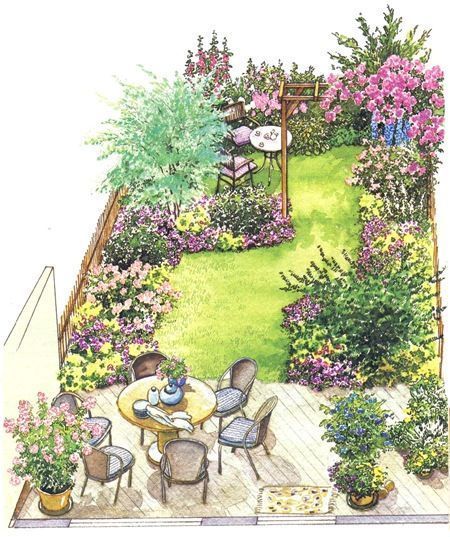
Creating a small garden layout can be a fun and rewarding project for any homeowner. With limited space, it’s important to maximize every inch of the area to create a beautiful and functional outdoor space. One key aspect of a successful small garden layout is careful planning. Start by measuring the available space and sketching out a rough design on paper. Consider elements such as pathways, seating areas, focal points, and the types of plants you want to incorporate. Vertical gardening can also be a great way to make the most of limited space by using trellises, wall planters, and hanging baskets. When choosing plants, opt for species that are well-suited to your climate and that have a compact growth habit. Remember to also consider the maintenance requirements of each plant to ensure easy upkeep. By dedicating some time and effort to thoughtful planning, a small garden layout can become a charming and inviting retreat that enhances the beauty of your home.
Small garden layouts can be both functional and aesthetically pleasing, offering a peaceful and serene sanctuary right in your own backyard. When designing a small garden, it is important to maximize the space available while also considering the overall look and feel you want to achieve. By carefully selecting plants, flowers, and other elements, you can create a beautiful outdoor space that is perfect for relaxing or entertaining.
One key aspect of a small garden layout is to carefully choose the plants and flowers that will thrive in your particular climate and soil conditions. By selecting native plants and flowers, you can ensure that your garden will be low-maintenance and environmentally friendly. Additionally, consider using vertical gardening techniques such as trellises or hanging baskets to make the most of limited space. This will not only add visual interest to your garden but also allow you to grow a greater variety of plants.
Another important consideration when designing a small garden layout is the use of pathways and borders to create a sense of flow and organization. By creating defined pathways and borders, you can help guide visitors through your garden and prevent plants from spilling over into unwanted areas. Consider using materials such as gravel, pavers, or stepping stones to create attractive and functional paths that complement the overall design of your garden. Additionally, incorporating seating areas or outdoor furniture can help create a welcoming and inviting atmosphere for enjoying your garden.
By carefully selecting plants, incorporating vertical gardening techniques, and creating defined pathways and borders, you can design a small garden layout that is both beautiful and practical. With a little planning and creativity, you can create a tranquil outdoor space that reflects your personal style and provides a peaceful retreat from the hustle and bustle of everyday life. Whether you have a small balcony, patio, or backyard, there are endless possibilities for creating a small garden that is sure to delight and inspire.
 Garden Ideas
Garden Ideas







